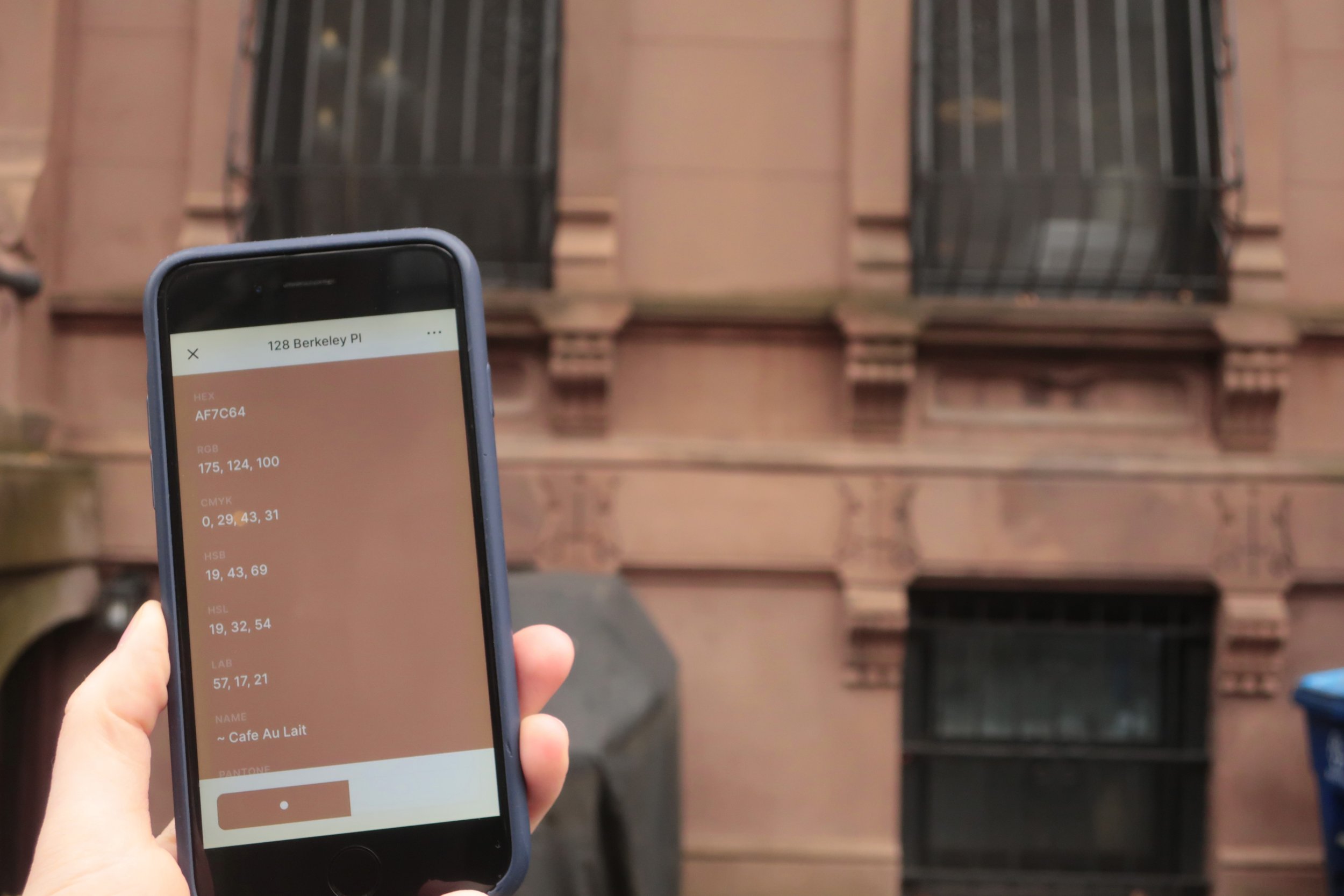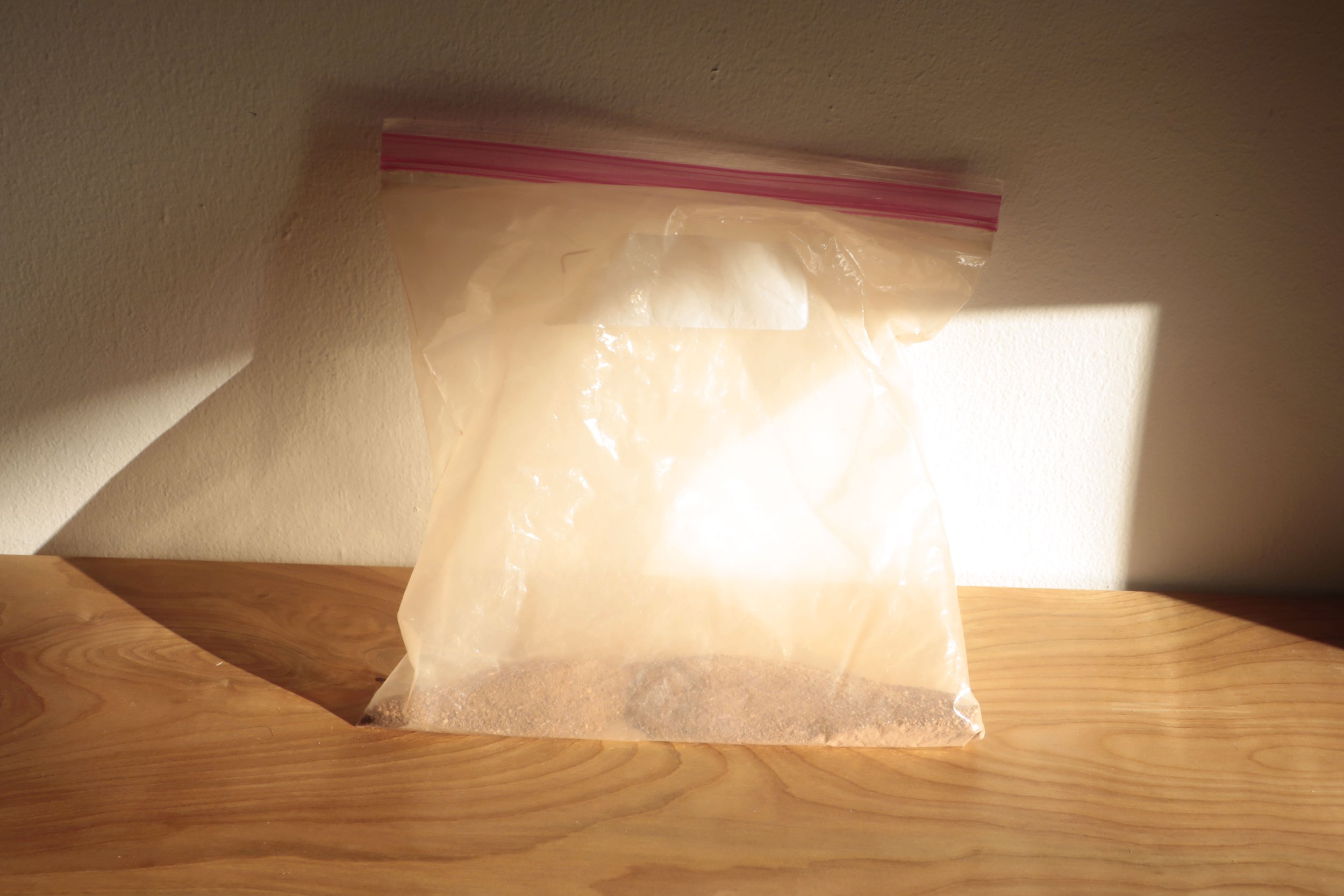
Documenting brownstone colors
When I moved to Brooklyn from Barcelona in December 2021, the colors of brownstones quickly caught my eye. Brownstones are row houses characterized by their continuous matte soft browns and reddish browns shades which comes from the color of the sandstone they were built in. What I most enjoyed about them was the subtle shifts of color from one brownstone to the next. So I started documenting their colors using an app on my phone called Coolors.
Sometimes, someone would ask me if I was looking for someone, seeing my suspicious posture in front of their house. Luckily no one chased me away. On the contrary, people seemed chatty and happy to share stories from their house. I even made friends. Someone kindly gave me sample of the material her brownstone was used for its renovation in a ziplog bag. Later, I was invited to a party at her home.

I noted the current weather and light as I was transcribing the color, as colors shifted easily in the shade (sh) on a sunny day to a cloudy day (cl). Beyond those shifts, I realized that brownstones colors were much more varied than I had initially thought. Some had more pink in them, others leaned towards yellow. Some were lighter, others more somber. A few were exceptionally intense in color.
With time, I took more notes. I couldn’t help but notice how harmonious darker window frames looked with these already dusty colors generally on the dark side. White frames, not uncommon, were crude and did not seem to belong.
I also noted how the color changed when wet versus dry, a notable change. Or when a greenish patina was installed. Lastly, as matte as they seemed, I was delighted to see brownstones gently sparkling in the sun (you have to find the right angle). “Silica”, a brownstone owner said. Neat-looking brownstones are, after all, reconstructions of the original brownstone and its color.
Featured in Swiss Miss and Spiegel magazine.


Brownstone colors side by side
Dry vs wet brownstone
Brownstone color + patina
Black vs white windowframes


